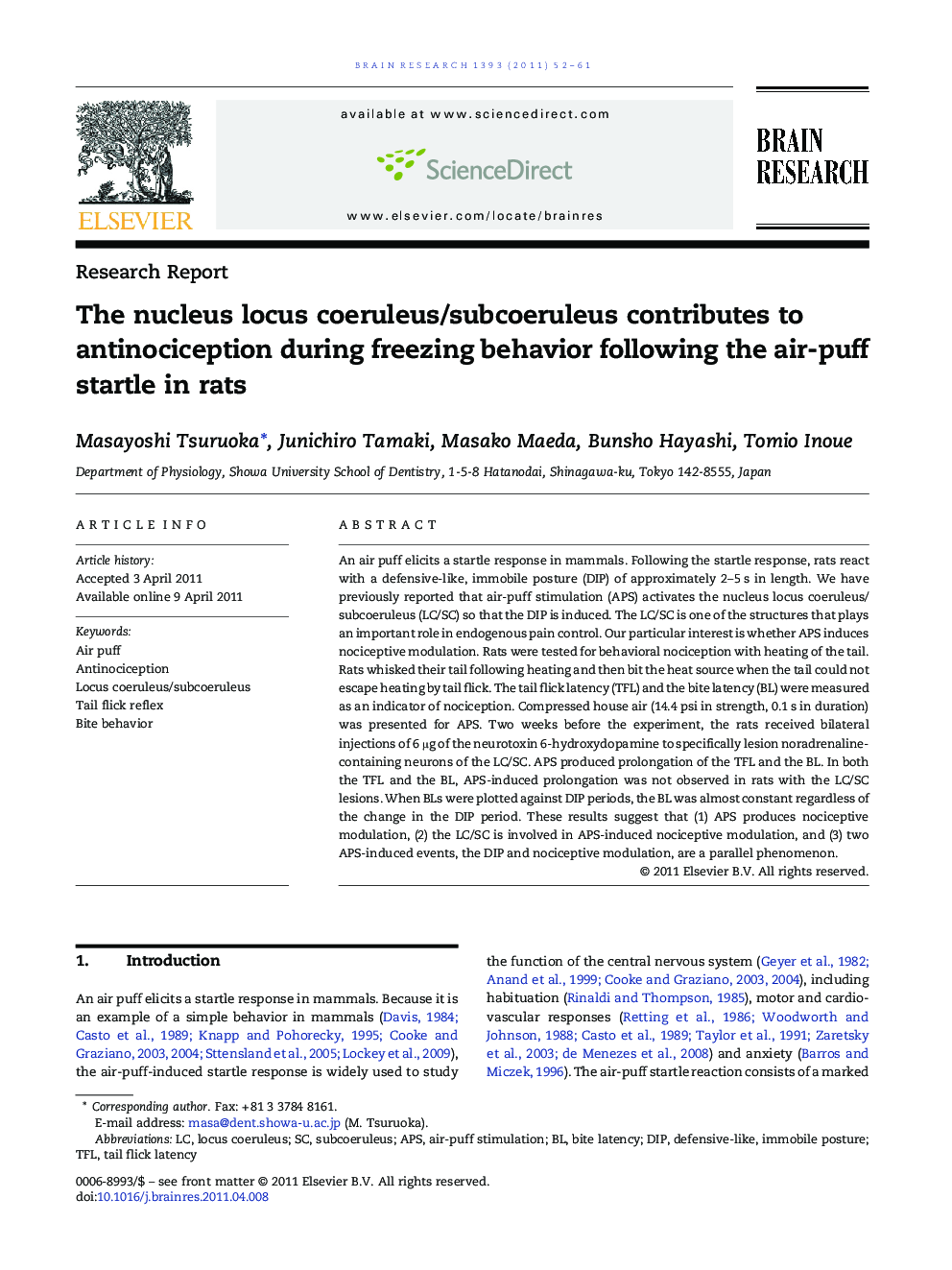| کد مقاله | کد نشریه | سال انتشار | مقاله انگلیسی | نسخه تمام متن |
|---|---|---|---|---|
| 6264841 | 1614046 | 2011 | 10 صفحه PDF | دانلود رایگان |

An air puff elicits a startle response in mammals. Following the startle response, rats react with a defensive-like, immobile posture (DIP) of approximately 2-5 s in length. We have previously reported that air-puff stimulation (APS) activates the nucleus locus coeruleus/subcoeruleus (LC/SC) so that the DIP is induced. The LC/SC is one of the structures that plays an important role in endogenous pain control. Our particular interest is whether APS induces nociceptive modulation. Rats were tested for behavioral nociception with heating of the tail. Rats whisked their tail following heating and then bit the heat source when the tail could not escape heating by tail flick. The tail flick latency (TFL) and the bite latency (BL) were measured as an indicator of nociception. Compressed house air (14.4 psi in strength, 0.1 s in duration) was presented for APS. Two weeks before the experiment, the rats received bilateral injections of 6 μg of the neurotoxin 6-hydroxydopamine to specifically lesion noradrenaline-containing neurons of the LC/SC. APS produced prolongation of the TFL and the BL. In both the TFL and the BL, APS-induced prolongation was not observed in rats with the LC/SC lesions. When BLs were plotted against DIP periods, the BL was almost constant regardless of the change in the DIP period. These results suggest that (1) APS produces nociceptive modulation, (2) the LC/SC is involved in APS-induced nociceptive modulation, and (3) two APS-induced events, the DIP and nociceptive modulation, are a parallel phenomenon.
Research highlights⺠Air-puff stimuli suppressed the nociceptive spinal reflex. ⺠Air-puff stimuli suppressed the nociceptive behavior mediated by the brain. ⺠Bilateral lesions of the locus coeruleus/subcoeruleus reversed this suppression. ⺠The coeruleospinal pathway is involved in air-puff suppression of nociception.
Journal: Brain Research - Volume 1393, 1 June 2011, Pages 52-61